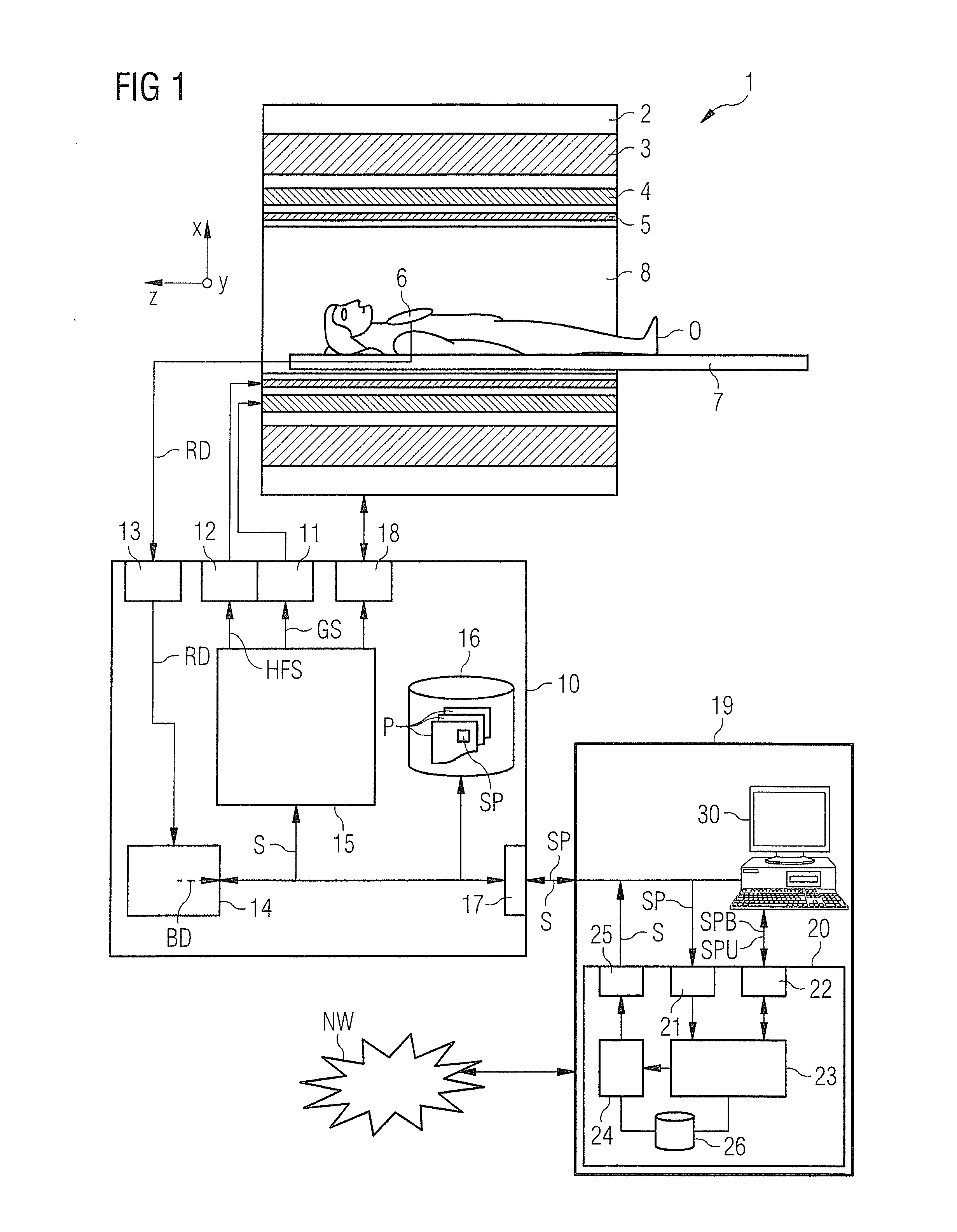Determination of a pulse sequence for a magnetic resonance system
a magnetic resonance system and pulse sequence technology, applied in the direction of magnetic measurement, geological measurement, reradiation, etc., can solve the problems of requiring programming tools that are dependent on the method, and requiring highly specialized programmers, so as to facilitate sequence programming
- Summary
- Abstract
- Description
- Claims
- Application Information
AI Technical Summary
Benefits of technology
Problems solved by technology
Method used
Image
Examples
Embodiment Construction
[0050]A magnetic resonance system 1 according to the invention is schematically depicted in FIG. 1. The system includes the actual magnetic resonance scanner 2 with an examination space or patient tunnel 8 located therein. A bed 7 can be driven into this patient tunnel 8 so that a patient O or test subject lying thereupon during an examination can be borne at a defined position within the magnetic resonance scanner 2 relative to the magnet system and radio-frequency system arranged therein, or can also be moved between different positions during a measurement.
[0051]Basic components of the magnetic resonance scanner 2 are a basic field magnet 3, a gradient system 4 with magnetic field gradient coils to generate magnetic field gradients in x-, y- and z-direction, and a whole-body radio-frequency coil 5. The magnetic field gradient coils in the x-, y- and z-direction are controllable independently of one another so that gradients can be applied in arbitrary logical spatial directions (...
PUM
 Login to View More
Login to View More Abstract
Description
Claims
Application Information
 Login to View More
Login to View More - R&D
- Intellectual Property
- Life Sciences
- Materials
- Tech Scout
- Unparalleled Data Quality
- Higher Quality Content
- 60% Fewer Hallucinations
Browse by: Latest US Patents, China's latest patents, Technical Efficacy Thesaurus, Application Domain, Technology Topic, Popular Technical Reports.
© 2025 PatSnap. All rights reserved.Legal|Privacy policy|Modern Slavery Act Transparency Statement|Sitemap|About US| Contact US: help@patsnap.com



